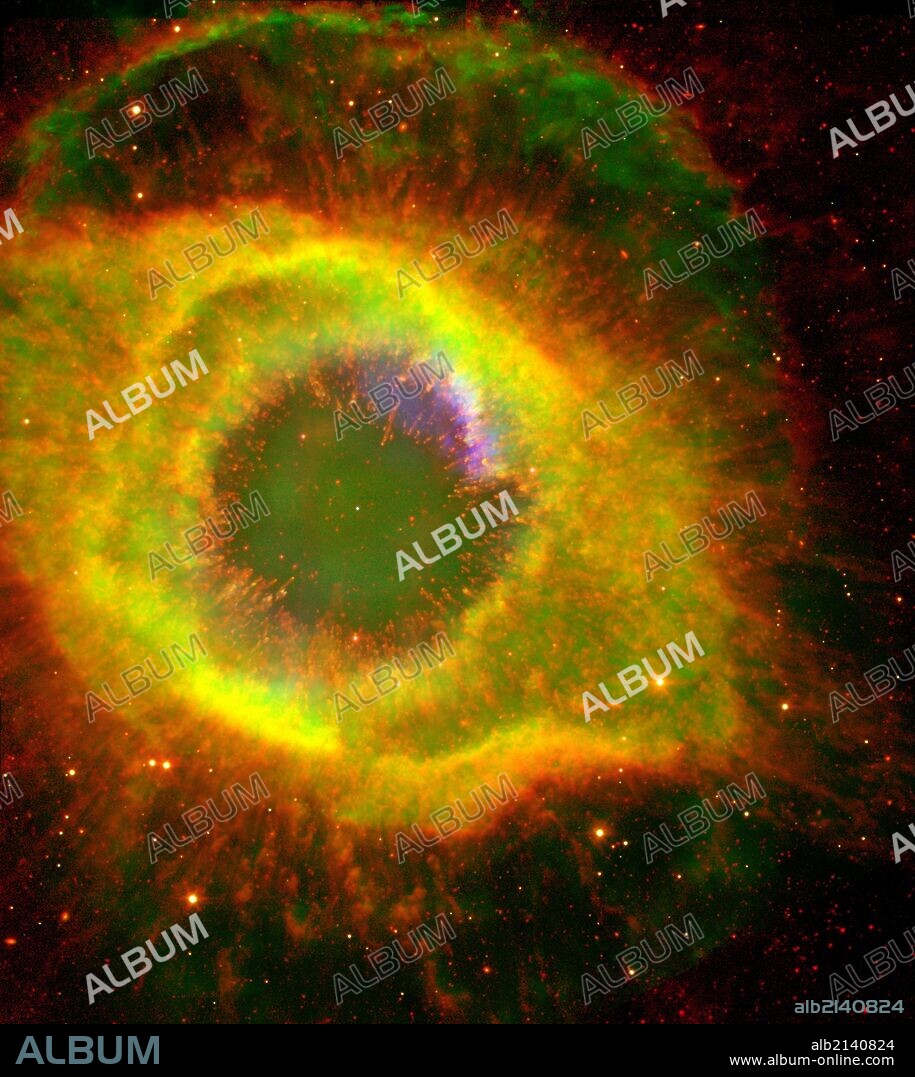alb2140824
Six hundred and fifty light-years away in the constellation Aquarius, a dead star about the size of Earth, is refusing to fade away peacefully. In death, it is spewing out massive amounts of hot gas and intense ultraviolet radiation, creating a spectacular object called a "planetary nebula. " Hubble Space Telescope (HST), Spitzer Space Telescope.

|
Ajouter à une autre Lightbox |
|
Ajouter à une autre Lightbox |



Avez-vous déjà un compte? S'identifier
Vous n'avez pas de compte ? S'inscrire
Acheter cette image.
Sélectionnez l'usage:

Titre:
Six hundred and fifty light-years away in the constellation Aquarius, a dead star about the size of Earth, is refusing to fade away peacefully. In death, it is spewing out massive amounts of hot gas and intense ultraviolet radiation, creating a spectacular object called a "planetary nebula. " Hubble Space Telescope (HST), Spitzer Space Telescope.
Légende:
Voir la traduction automatique
Six hundred and fifty light-years away in the constellation Aquarius, a dead star about the size of Earth, is refusing to fade away peacefully. In death, it is spewing out massive amounts of hot gas and intense ultraviolet radiation, creating a spectacular object called a "planetary nebula." Hubble Space Telescope (HST), Spitzer Space Telescope. (Photo by: Universal History Archive/UIG via Getty Images)
Crédit:
Album / Universal Images Group / Universal Science Images \ UIG
Autorisations:
Taille de l'image:
3952 x 4422 px | 50.0 MB
Taille d'impression:
33.5 x 37.4 cm | 13.2 x 14.7 in (300 dpi)
Mots clés:


 Pinterest
Pinterest Twitter
Twitter Facebook
Facebook Copier le lien
Copier le lien Email
Email
